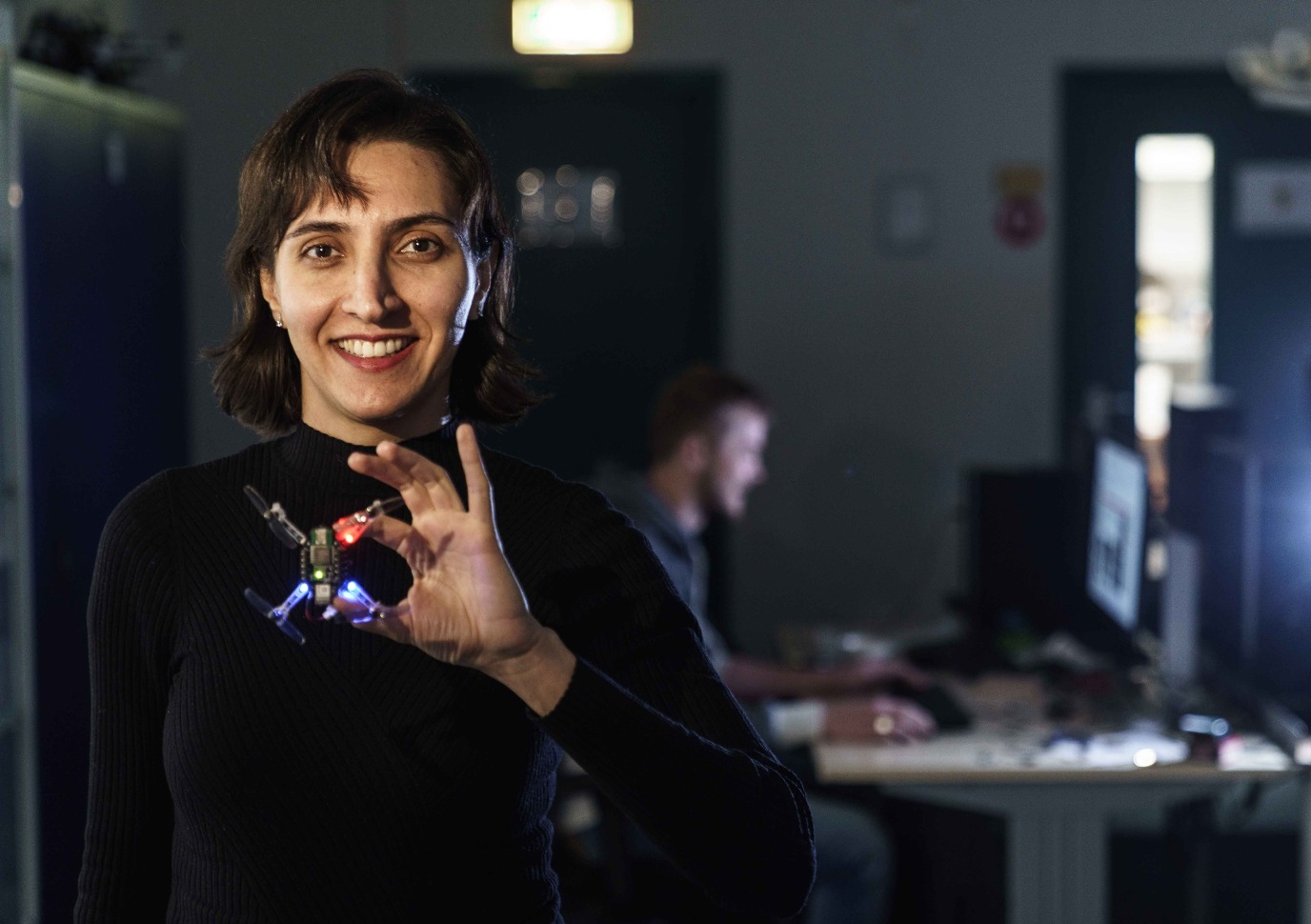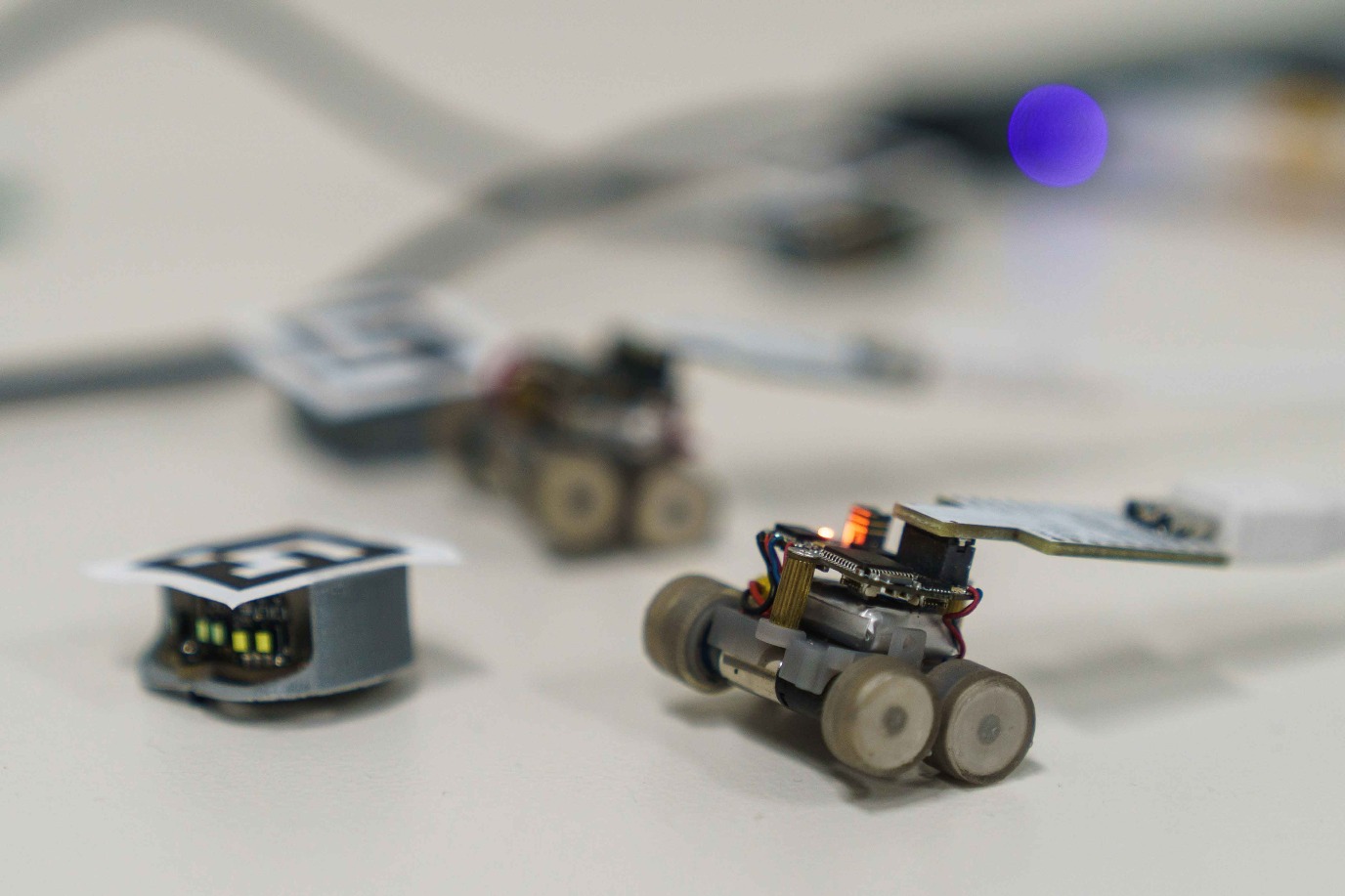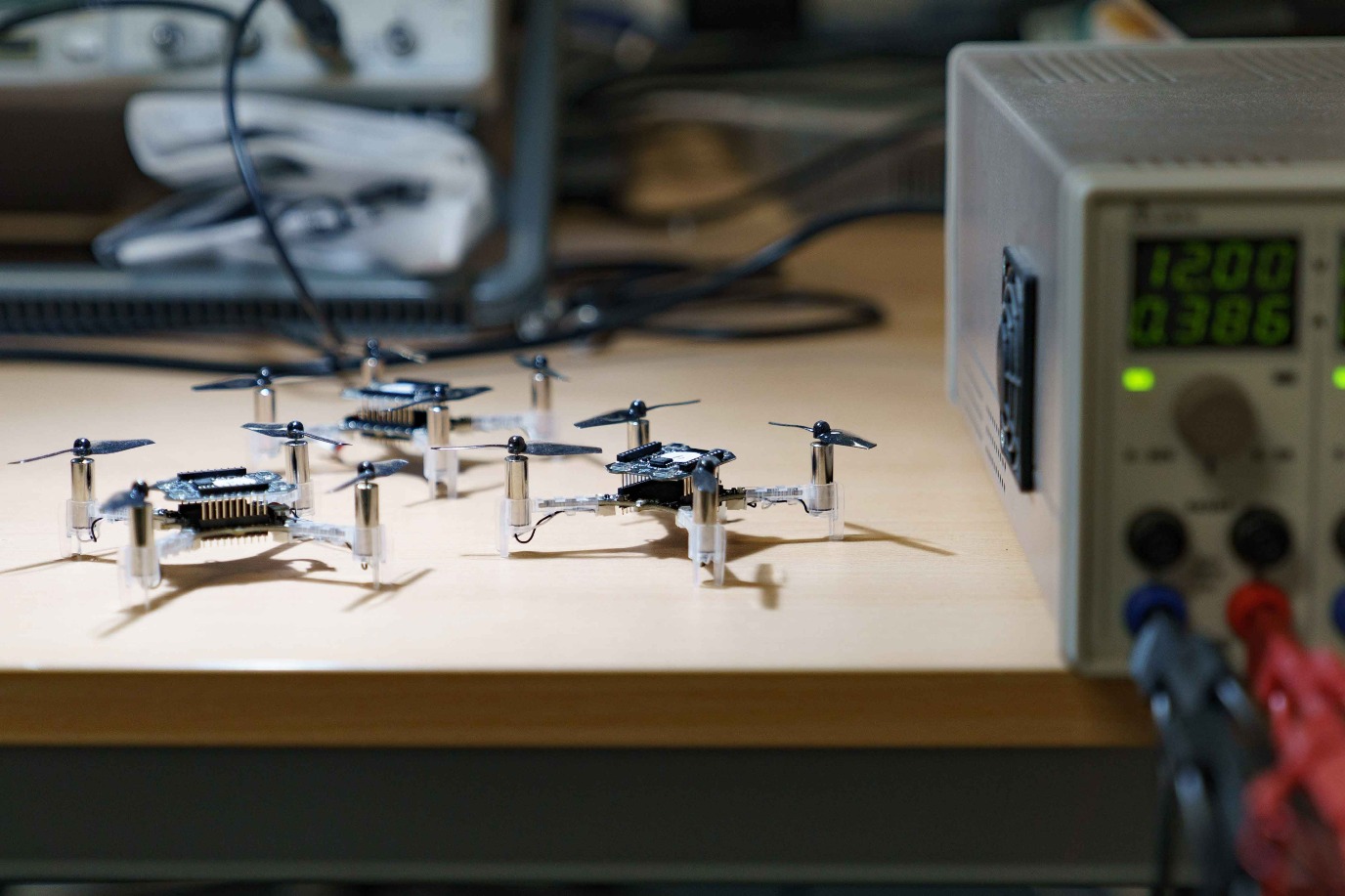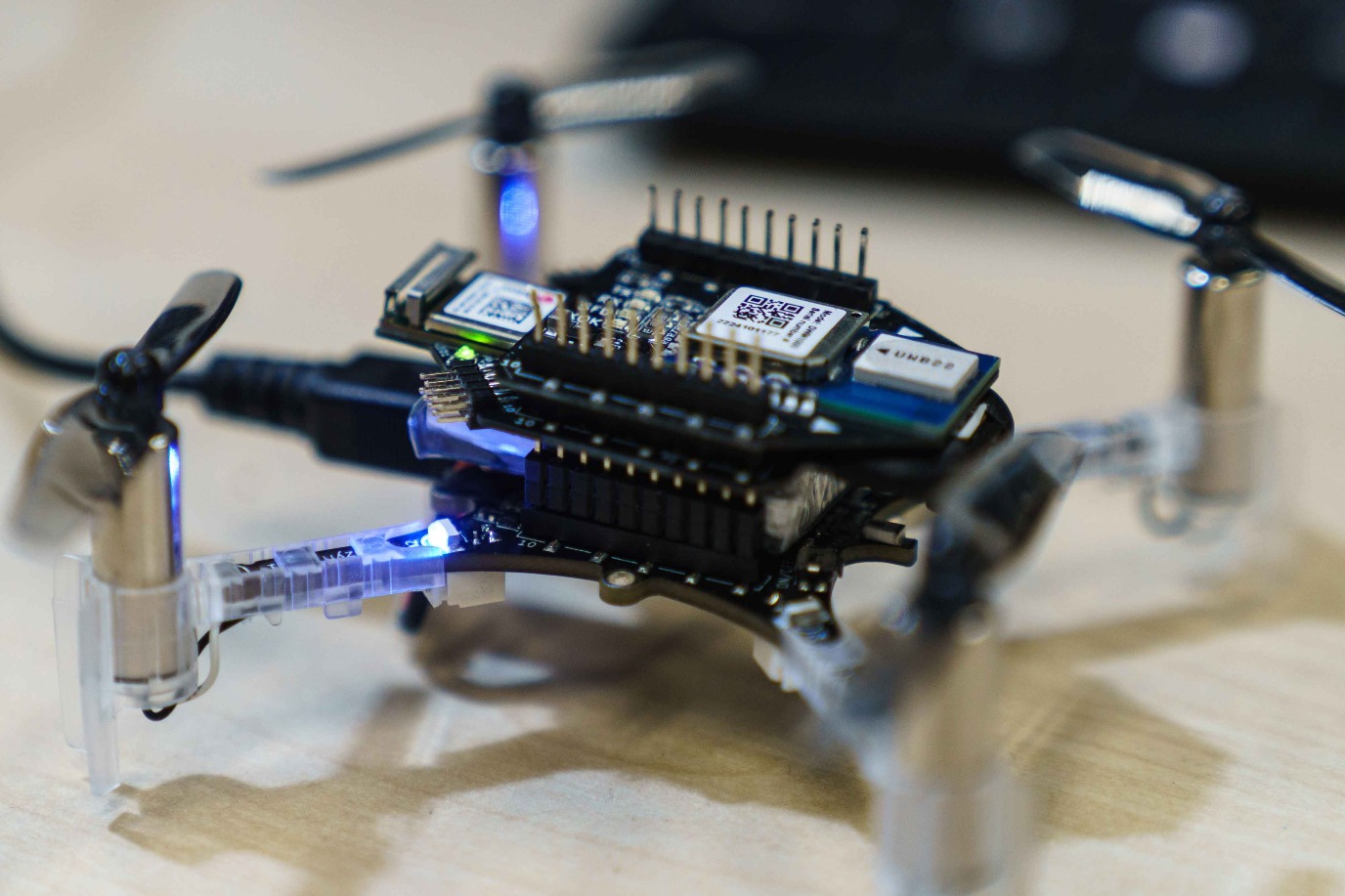Swarming around a skyscraper
Imagine a swarm of tiny drones, like the one pictured below held by electrical engineer Bahar Haghighat. They fly around a skyscraper or a bridge, or any other hard-to-reach area. ‘Such drones can be used to spot defects on surfaces,’ Haghighat explains. ‘They can alert a human to carry out a repair, or for further inspection.’ Hold on, are we talking science fiction here? ‘No, this is already happening. Both start-up companies and academics are working on this technology, and things are moving very fast.’




It was her fascination with how nature works that led Haghighat to this field of research. ‘Think of bees, termites, a school of fish, a flock of birds: together they operate as a unit, and they can tackle problems larger than the individual, such as ants building a nest or bees a beehive. And they do it without any central coordination.’ How different are we humans, who need a construction plan, a manager, and a whole bunch of workers to get a building off the ground.
A swarm turns out to have a number of useful properties for the application that Haghighat is currently working on: automated inspection. ‘Essentially, swarms add flexibility,’ Haghighat explains. ‘If one member breaks down, another can replace it. And instead of having cameras or sensors installed at specific locations, you can cover an entire area with a moving swarm.’
Haghighat’s research mainly focuses on making small-scale robots work in a controlled lab environment. For instance: ‘Can they be designed to autonomously coordinate amongst themselves which individual robot goes where, and can they send back data when a defect is identified?’ In the future, these robots should also be able to classify what they see: is this defect insignificant or bad enough to alert a human? ‘They could even get a second opinion from another robot in the swarm,’ Haghighat says. ‘That’s the beauty of their flexibility.’
Text: FSE Science Newsroom | Charlotte Vlek
Photos: Reyer Boxem
Every two weeks, UG Makers puts the spotlight on a researcher who has created something tangible, ranging from homemade measuring equipment for academic research to small or larger products that can change our daily lives. That is how UG researchers contribute to the solutions for big scientific and societal challenges.
For decades, engineering teaching and research at the UG has been part of a wide array of strong disciplines, and from a national point of view, our collaboration with the four technical universities is becoming more and more intensive. Previous portraits of Makers can be found on the overview page
More information
Bahar Haghighat
| Last modified: | 12 June 2024 2.57 p.m. |
More news
-
24 March 2025
UG 28th in World's Most International Universities 2025 rankings
The University of Groningen has been ranked 28th in the World's Most International Universities 2025 by Times Higher Education. With this, the UG leaves behind institutions such as MIT and Harvard. The 28th place marks an increase of five places: in...
-
05 March 2025
Women in Science
The UG celebrates International Women’s Day with a special photo series: Women in Science.
-
16 December 2024
Jouke de Vries: ‘The University will have to be flexible’
2024 was a festive year for the University of Groningen. In this podcast, Jouke de Vries, the chair of the Executive Board, looks back.
